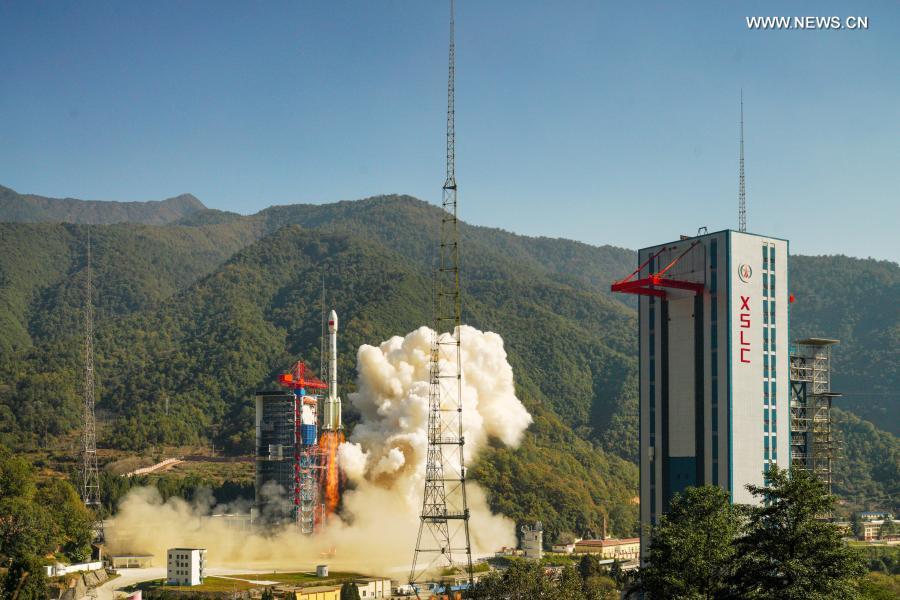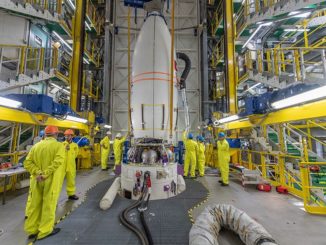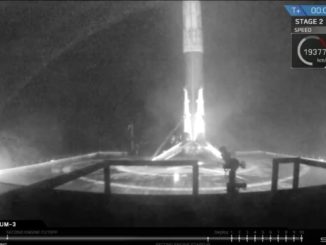
China launched an optical stereo mapping satellite Sunday, using an upgraded version of the country’s Long March 3B rocket with an extended payload shroud to deliver the Earth-imaging spacecraft into orbit 300 miles (nearly 500 kilometers) above Earth.
The Gaofen 14 satellite — part of the China High-Resolution Earth Observation System, or CHEOS — launched on top of the liquid-fueled Long March 3B rocket at 0358 GMT Sunday (10:58 p.m. EST Saturday), according to Chinese government statements.
The mission debuted new upgrades to the Long March 3B rocket, including an extended 13.8-foot-diameter (4.2-meter) payload fairing stretching nearly 3 feet (90 centimeters) taller than nose cones flown on past Long March 3B launches, according to the China Academy of Launch Vehicle Technology, or CALT.
The expanded payload shroud allows the Long March 3B rocket to carry bigger satellites into orbit. The Long March 3B typically carries satellites into high-altitude orbits thousands of miles above Earth, and the launch of Gaofen 14 Sunday marked the first time a Long March 3B delivered a payload into a low-altitude orbit.
Chinese officials have not released the size or mass of the Gaofen 14 satellite, but the larger payload fairing and use of the powerful Long March 3B rocket suggests the spacecraft might be one of China’s largest Earth-imaging spacecraft.
The Long March 3B variant that debuted Sunday is known as the Long March 3B/G5. The upgraded three-stage rocket stands about 190 feet (58 meters) tall, according to China’s state-run aerospace contractors.
Other changes introduced on the Long March 3B/G5 rocket configuration include updates to the launcher’s flight software, enabling the rocket to perform an “omni-directional takeoff roll” to target trajectories into different types of orbits. The changes increase the adaptability of the Long March 3B rocket, according to the China Aerospace Science and Technology Corp.

Chinese officials said the Long March 3B rocket delivered the Gaofen 14 satellite into the mission’s targeted orbit. U.S. military tracking data confirmed the spacecraft was orbiting about 300 miles, or nearly 500 kilometers, above Earth in a sun-synchronous orbit.
Gaofen 14 is an optical surveying and mapping satellite designed to gather global three-dimensional, stereo imagery, according to CASC. The spacecraft will collect imagery to produce large-scale digital topographic maps and digital elevation models, officials said.
The new satellite is part of the CHEOS fleet, a program comprising optical and radar imaging spacecraft. Authorities have published high-resolution imagery taken by previous Gaofen satellites, suggesting the program has at least a partial civilian purpose.
The liftoff of the Long March 3B rocket Sunday marked the 36th orbital launch attempt by China this year.
Email the author.
Follow Stephen Clark on Twitter: @StephenClark1.



